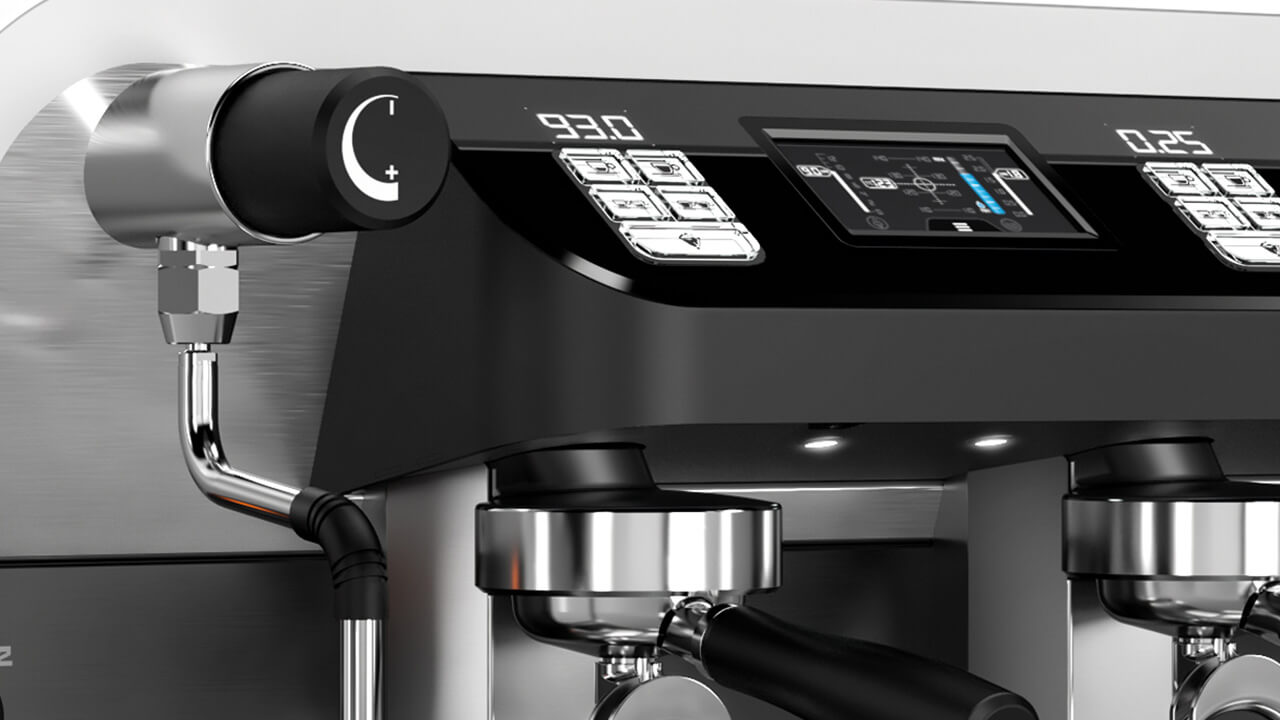- What is PID temperature control, do I really need it?
- Classic temperature control for portafilter machines
- What is PID temperature control?
- Advantages of PID temperature control
- Where can you find PID controllers today?
- Is it worth investing in a PID machine?
- These are the ideal brewing and coffee temperatures
Temperature control in coffee machines is one of the key factors for the quality of an espresso. Even a few degrees Celsius difference can noticeably alter the taste – sometimes too sour, sometimes too bitter. Unlike simple thermostats that simply switch on and off, a PID controller can finely adjust the heating power and thus maintain the desired temperature more precisely.
Modern portafilter machines are therefore increasingly relying on so-called PID temperature controls to maintain precise and constant brewing temperatures, resulting in a consistent taste experience. But what exactly makes PID control so special?
Classic temperature control for portafilter machines
Traditional portafilter machines usually use simple mechanical or electromechanical components for temperature control. Typical examples include:
- Pressure switches: These measure the boiler pressure and switch the heating on or off accordingly. Since pressure and temperature are related in a closed system like the boiler, they can be used to indirectly control the temperature. This method is primarily used in single-circuit or dual-boiler steam boilers.
- Bimetallic thermostats or capillary thermostats: These open or close an electrical circuit at specific temperatures. However, these inexpensive solutions react relatively slowly and inaccurately.
The disadvantage: These systems regulate the temperature with relatively large fluctuations (hysteresis), which leads to inconsistent results, especially when brewing espresso.
What is PID temperature control?
PID stands for Proportional–Integral–Derivative. It is an algorithmic control loop that combines three mathematical components to maintain a target temperature as constant as possible:
- Proportional component ( P ): Reacts to the current deviation from the setpoint.
- Integral part ( I ): Corrects systematic deviations over time.
- Derivative part ( D ): Takes the rate of change of temperature into account to prevent excessive reactions.
A PID controller continuously measures the actual temperature using a temperature sensor (e.g. B. thermocouple or PT100) and controls the heating output dynamically and proactively.
Advantages of PID temperature control
PID control offers several clear advantages over classical methods:
- Reduced temperature fluctuations : The temperature remains stable to within a few tenths of a degree.
- Repeatability : Once set, values lead to consistent results – ideal for professional use.
- Flexibility : The target temperature can be set individually, e.g. E.g. for different roasting levels or types of beans.
- Faster heating and less energy waste thanks to more efficient control.
The result is an espresso with consistent extraction, better balance and reproducible taste.
Where can you find PID controllers today?
PID controllers can now be found in many high-quality household and professional portafilter machines, especially in:
- Dual boiler and dual-circuit systems
- Machines with a focus on specialty coffee
- Modified devices by ambitious home baristas
Some manufacturers even allow manual adjustment of the PID parameters, although this requires specialist knowledge.
Is it worth investing in a PID machine?
For coffee lovers who regularly drink espresso and value consistency and control, a PID temperature controller is definitely a worthwhile investment. It provides more control over the entire brewing process, especially when using different bean varieties and for latte art fans (where steam also plays a role).
These are the ideal brewing and coffee temperatures
- Espresso: 92°C - 96°C
- Filter coffee: 90°C - 96°C
- Dark roasts: approx. 85°C - 90°C
- Light roasts: approx. 90°C - 95°C
- Drinking temperature: Between 60°C and 70°C, after the coffee has cooled down a bit.

